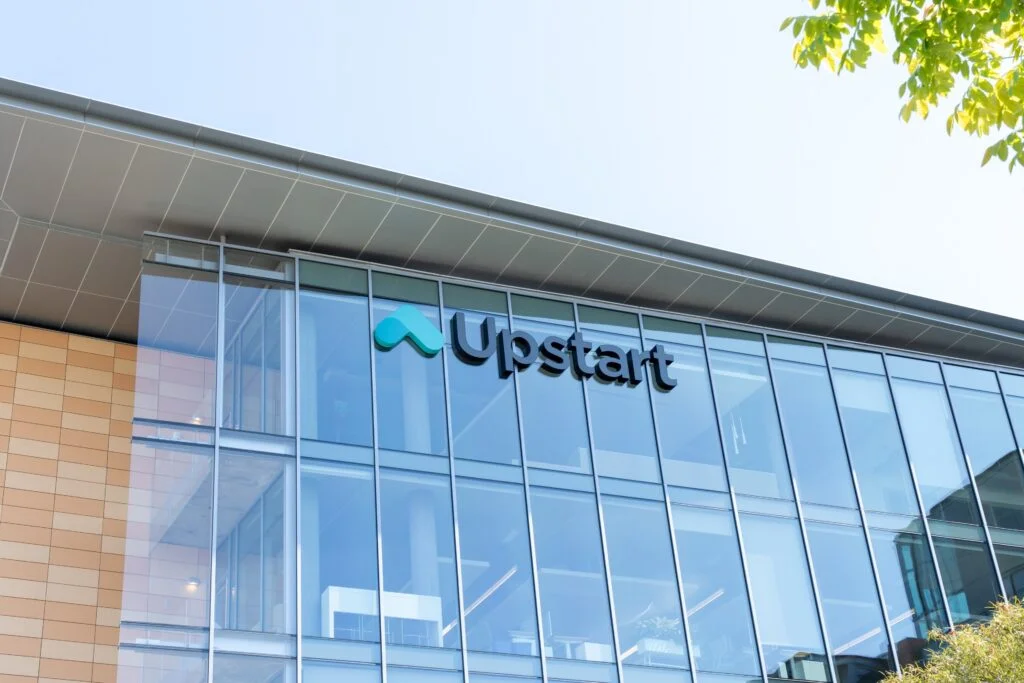
While artificial intelligence and its disruptive capabilities have lifted several innovators, the effect has been extremely lumpy for financial technology (fintech) specialist Upstart Holdings Inc (NASDAQ:UPST). Though the business offers tremendous upside potential, an uncertain macro environment has imposed chaos on UPST stock, thus bringing out the skeptics. But with the fundamental backdrop improving, UPST could be a tempting high-risk, high-reward prospect.
A lending platform, Upstart’s AI-based underwriting system aims to boost approvals while reducing defaults, thereby attracting attention (especially early on) from both banks and investors. During the frenzy of the COVID-19 crisis — which saw unique catalysts such as rock-bottom interest rates and distributions of stimulus checks — UPST stock skyrocketed toward the $400 level. Unfortunately, a hawkish pivot in monetary policy amid broader economic anxieties practically evaporated sentiment.
After tumbling into the weeds in December 2022, UPST stock has steadily marched higher — albeit in choppy fashion — to its current level. Interestingly, by doing this, the security has formed a wedge pattern at a pivotal time in the economy.
To be sure, serious concerns abound, such as the Trump administration’s tariffs and the recent government shutdown. However, as Nike Inc (NYSE:NKE) demonstrated with its strong earnings performance, tariffs don’t necessarily spell disaster. Plus, shutdowns tend to be short-lived affairs.
Ultimately, though, what could be the key driver for Upstart is monetary policy. On that front, thanks to the Federal Reserve’s benchmark interest rate cut — and the implication for additional downward adjustments — UPST stock could be an enticing contrarian opportunity.
Bearish Skepticism Bolsters The Contrarian Case For UPST Stock
Another key element to considering regarding Upstart’s bullish narrative is the high short interest against UPST stock. Right now, this metric stands at 26.7% of the float, with the underlying ratio coming in at 3.24 days to cover. In other words, out of the pool of publicly available shares, nearly three out of ten are mechanically earmarked for short transactions. It would also take more than half a business week to fully unwind the short exposure.
To be fair, it’s impossible to say with absolute certainty that all the short transactions are tied directly to bearish activities. At least some of these transactions could very well be related to hedging, market making or other purposes. What’s interesting, though, is that short exposure overall has been coming down, which would be expected given the Fed’s apparently dovish outlook.
Still, it might not be enough. When it comes to short interest, a reading of 10% or greater is often considered a warning. At almost 30%, UPST stock raises alarm. Ordinarily, such a circumstance would be considered bearish. However, another side exists to this story and that’s the short squeeze.
Essentially, all short transactions are credit-based, meaning that securities are initially borrowed from a broker and then immediately sold. The idea is for the target security to fall in value, allowing the short speculator to pick up shares on the cheap and return them to the broker, pocketing the difference as profit. But if the stock moves in the opposite direction (as in up), the speculator risks pocketing losses.
Even worse, since there’s no ceiling for how high a stock can go, short sellers theoretically face unlimited liability. Thus, the panic among the bears to cap their exposure causes the security to shoot up, since shorts can only be closed by buying.
That’s the power of the short squeeze — and it could potentially break UPST stock out of its consolidation cycle.
A Bold Bet To Consider
Thanks to the possible contrarian catalyst, along with a more favorable monetary environment, aggressive traders may be justified in their optimism. One tempting idea to consider is the 57.50/60.00 bull call spread expiring Nov. 21. This transaction involves buying the $57.50 call and simultaneously selling the $60 call, for a net debit paid of $85 (the most that can be lost in the trade).
Should UPST stock rise through the second-leg strike price at expiration, the maximum profit is $165, a payout of over 194%. Breakeven comes in at $58.35, which is about 10.4% above the current market price. It’s awfully ambitious but the bounce-back potentiality in the current environment makes the target arguably realistic.
Of course, this is a high-risk, high-reward idea. Ordinarily, the empirical data shows that long stretches of bearish stretches tend to resolve downward. However, the underlying sentiment regime may have shifted and therefore prior assumptions might not hold. As such, the bull spread could be an effective means to capture potential upside.
The opinions and views expressed in this content are those of the individual author and do not necessarily reflect the views of Benzinga. Benzinga is not responsible for the accuracy or reliability of any information provided herein. This content is for informational purposes only and should not be misconstrued as investment advice or a recommendation to buy or sell any security. Readers are asked not to rely on the opinions or information herein, and encouraged to do their own due diligence before making investing decisions.
Read More:
Options Corner: Why Archer Aviation Could Be Readying For Takeoff
Image: Shutterstock



